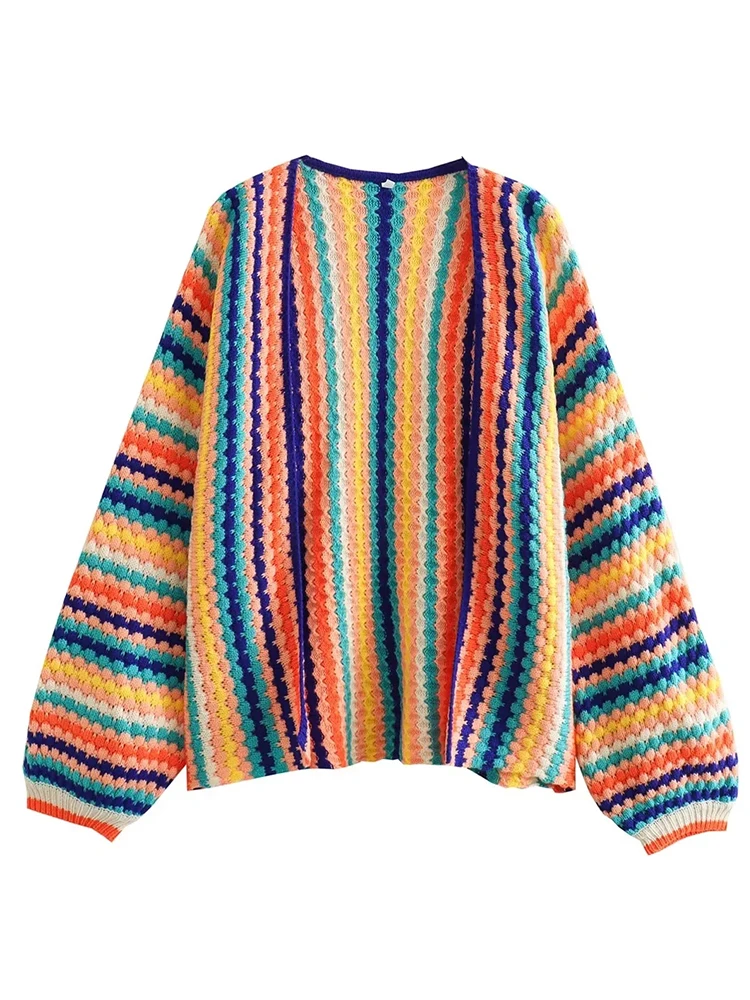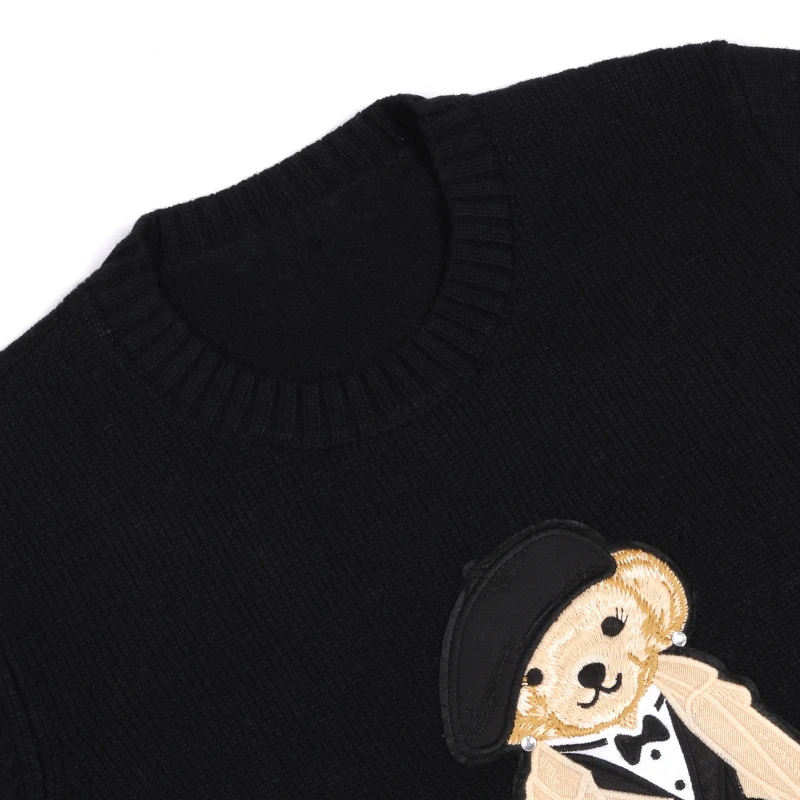Introduction: Why Proper Storage is Essential for Cashmere
Cashmere represents one of the finest investments you can make in your wardrobe. This luxuriously soft, lightweight fiber provides exceptional warmth and comfort, but its delicate nature demands thoughtful protection when not in use. Proper storage isn’t just about maintaining organization—it’s about preserving an investment that can last for decades with the right care.
When stored correctly, high-quality cashmere garments can retain their softness, shape, and appearance for 20+ years. However, improper storage can lead to irreversible damage in just one season. Given that premium cashmere items often represent a substantial investment, protecting them between wears becomes financially prudent as well.
Your cashmere faces several significant threats while in storage:
- Moths – These pests specifically target protein fibers like cashmere and wool
- Dust – Accumulates on fibers, causing them to become brittle over time
- Mildew – Develops in humid conditions, potentially ruining garments permanently
- Stretching – Improper hanging or folding leads to misshapen garments
- Fading – Exposure to light causes color deterioration
In this comprehensive guide, we’ll explore the most effective containers and methods to protect your cashmere investment, ensuring your store cashmere properly for years of continued enjoyment. Whether you’re looking to expand your collection with new cashmere sweaters or protecting pieces you already treasure, these strategies will help maximize the lifespan of your luxury garments.
The Critical First Step: Clean Before Storage
Before considering which container to use, understand this essential principle: never store dirty cashmere. Even garments that appear clean can harbor invisible threats that make them vulnerable during storage.
Unwashed cashmere contains microscopic food particles, skin cells, and body oils—all of which attract moths and other pests. These subtle residues create an inviting buffet for destructive insects, which can devastate an entire collection before you even realize they’re present.
When preparing cashmere for storage:
- Hand washing is typically preferable using a pH-neutral wool detergent in cool water
- Dry cleaning is an alternative but should be done sparingly to avoid chemical buildup
- Complete drying is absolutely essential—even slightly damp cashmere will develop mildew
- Air dry flat away from direct heat or sunlight to maintain garment shape
To verify your cashmere is truly dry before storage, check that it:
– Feels light and fluffy to the touch
– Has no cool or damp spots when pressed against your wrist or cheek
– Carries no musty or damp odor
– Returns to its normal weight (wet cashmere feels noticeably heavier)
The best way clean cashmere sweaters involves gentle techniques that remove impurities while preserving the delicate fibers. This preparatory step significantly increases the effectiveness of whatever storage container you ultimately choose, creating the foundation for successful long-term preservation.
Breathable Fabric Bags: The Gold Standard for Cashmere
For preserving cashmere quality over time, breathable fabric bags represent the gold standard in storage solutions. These purpose-designed containers strike the perfect balance between protection and fiber health.
Ideal breathable storage bags are made from:
– 100% cotton canvas or muslin (unbleached preferred)
– Non-woven natural fabrics with tight weaves
– Materials with sufficient density to block dust while allowing air circulation
The primary advantage of breathable bags lies in their ability to prevent the “greenhouse effect” that damages natural fibers. Unlike sealed containers, fabric bags allow air exchange that prevents moisture buildup while still protecting against dust and direct light exposure.
Key benefits include:
– Continuous air circulation prevents mildew and odor development
– Protection from dust accumulation that can damage fibers
– Maintenance of optimal humidity levels for protein fibers
– Ability to pair with cedar or lavender inserts for moth protection
– Easy visibility and access with zippered or buttoned closures
When selecting fabric storage bags, look for reinforced seams, smooth interior surfaces that won’t catch on delicate fibers, and closures that seal completely while still allowing minimal airflow. Avoid options with plastic components that can trap moisture against the fabric.
These versatile containers work exceptionally well for storing women’s cashmere pullovers and other valuable pieces. For optimal protection, store only one or two items per bag to prevent compression and allow adequate air circulation around each garment.
Airtight Plastic Containers: When and How to Use Them
While breathable containers offer significant advantages, certain situations call for the complete isolation that only airtight plastic containers can provide. These rigid solutions create a sealed environment that offers different protective benefits.
Airtight containers become particularly valuable when:
– You face an active moth infestation requiring quarantine
– Storage areas have extreme humidity fluctuations
– Moving or transporting cashmere between locations
– Protecting against flooding or water damage risks
The primary advantage of plastic containers is their impenetrable barrier against environmental threats. However, this same quality creates potential hazards if used incorrectly. The main concern is trapped moisture, which can cause mildew development even in seemingly dry garments.
To use plastic containers safely:
– Ensure cashmere is completely dry before storage (crucial)
– Add desiccant packets to absorb any residual moisture
– Choose opaque containers to prevent light exposure and fading
– Select containers made from acid-free polypropylene rather than PVC
– Allow periodic air circulation by opening containers every 2-3 months
– Inspect for condensation on container walls (a warning sign)
When arranging cashmere in plastic containers, avoid overcrowding and use acid-free tissue paper between layers to prevent creasing. Consider these containers a short-term solution rather than for indefinite storage unless regularly monitored and aired out.
For those interested in long-term preserving luxury cashmere, plastic containers should be used judiciously and with appropriate precautions to prevent the very damage you’re trying to avoid.
Cedar Storage Solutions: Natural Protection with Style

Cedar storage represents a perfect marriage of functionality and aesthetics, offering natural protection with timeless appeal. The science behind cedar’s effectiveness lies in its aromatic oils—specifically, the volatile compounds that naturally repel adult moths and discourage them from laying eggs near your precious garments.
Cedar storage options include:
– Cedar chests – Traditional, furniture-quality storage with substantial capacity
– Cedar-lined wardrobes – Built-in protection for hanging and folded items
– Cedar drawer liners – Thin panels that convert existing drawers
– Cedar blocks and hangers – Portable protection that can enhance other storage methods
Beyond moth deterrence, cedar provides several additional benefits:
– Natural humidity regulation helps maintain optimal moisture levels
– Pleasant, natural fragrance eliminates musty storage odors
– Aesthetic appeal that complements home décor
– Sustainable and non-toxic protection without chemicals
The primary limitation of cedar is that its protective oils diminish over time. To maintain effectiveness:
– Sand cedar surfaces lightly every 6-12 months to release fresh oils
– Apply cedar oil refresher sprays when the natural scent fades
– Keep cedar containers closed when not in use to preserve volatile compounds
– Avoid overcrowding, which prevents adequate exposure to cedar surfaces
Cedar storage creates an ideal environment for protecting cashmere from moths while adding natural beauty to your home. For optimal protection, combine cedar elements with other preventive measures like regular cleaning and inspection of your garments.
Vacuum Storage Bags: Proceed with Caution
Vacuum storage bags frequently appear as space-saving solutions for all types of clothing, but they present significant risks for cashmere and other delicate natural fibers. While their compact nature makes them tempting for those with limited storage space, their compression mechanism works directly against cashmere’s natural structure.
The fundamental problem with vacuum storage for cashmere is compression damage. When air is removed:
– Cashmere fibers become crushed and flattened
– Natural elasticity and loft may be permanently compromised
– Creases and compression lines can become permanent
– The three-dimensional structure that creates cashmere’s insulating properties collapses
Only consider vacuum bags in extremely limited circumstances:
– Absolute space constraints make other options impossible
– Storage duration will be very brief (under one month)
– Items are already slightly worn and less pristine
If you must use vacuum storage, follow these precautions:
– Compress only minimally—avoid maximum compression settings
– Use acid-free tissue paper between folds to prevent sharp creases
– Remove items promptly when storage ends
– Allow significant recovery time with steam treatment afterward
Better alternatives that save space without compression include:
– Thin, stackable rigid containers
– Under-bed storage boxes with minimal height
– Multi-garment hanging organizers with individual compartments
Vacuum storage poses particular risks for structured pieces like cashmere turtlenecks where shape retention is crucial to the garment’s appearance and function. Consider this option only as a last resort when other methods aren’t feasible.
What Never to Use for Cashmere Storage
While proper storage containers protect your investment, certain common storage methods actively damage cashmere and should be avoided entirely:
Cardboard boxes
– Attract and harbor pests that feed on paper and then move to cashmere
– Contain acidic compounds that transfer to fibers over time
– Absorb environmental moisture that promotes mildew growth
– Break down over time, releasing particles that embed in cashmere
Dry cleaner plastic bags
– Create an impermeable moisture barrier that traps humidity
– Generate a greenhouse effect that accelerates fiber deterioration
– Release chemicals that can cause yellowing over time
– Prevent necessary air circulation around natural fibers
Non-breathable synthetic garment bags
– Market themselves as storage solutions while creating the same problems as plastic
– Trap body oils and moisture that attract pests and cause fiber damage
– Create stagnant air environments where odors develop and become trapped in fibers
Direct hanging on regular hangers
– Causes shoulder stretching as gravity pulls the fabric downward
– Creates distortion in the garment’s natural shape
– Allows pressure points where the hanger contacts the fabric
– Results in permanent deformation that cannot be corrected
For comprehensive guidance on what works and what doesn’t, the ultimate guide to cashmere storage provides detailed explanations of proper storage principles. Following these guidelines helps avoid the disappointment of discovering damaged garments when you’re ready to wear them again.
Comprehensive Moth Prevention Strategies

Moth prevention deserves special attention in any cashmere storage plan, as these persistent pests represent the single greatest threat to your garments. Understanding the moth life cycle reveals why prevention is so critical: adult moths don’t cause damage—their nearly invisible larvae do, and by the time you spot adults, significant harm may already have occurred.
Effective natural repellents include:
– Cedar products – Blocks, balls, rings, and sachets containing aromatic oils
– Lavender sachets – Pleasant-smelling deterrent that repels adult moths
– Rosemary and clove bundles – Strong herbal scents that discourage infestation
– Combinations – Multiple natural repellents enhance protection through different mechanisms
For stronger protection, commercial options include:
– Pheromone traps that attract and capture adult male moths
– Herb-based moth papers and sachets with concentrated essential oils
– Moth-specific deterrent sprays safe for protein fibers
Implement a proactive inspection schedule:
– Monthly visual checks during high-risk seasons (spring/summer)
– Quarterly thorough examinations of all stored cashmere
– Immediate inspection of any garments where moths are spotted nearby
– Special attention to seams, folds, and dark areas where larvae hide
For emergency intervention when moths are discovered:
1. Immediately isolate affected garments
2. Freeze items for a minimum of 72 hours at 0°F (-18°C)
3. Thaw completely, then freeze again for a second cycle
4. Clean thoroughly after treatment
Brushed cashmere sweaters with their raised surface texture require extra vigilance, as their structure creates ideal hiding places for moth eggs and larvae. Regular brushing with a cashmere comb helps remove any early signs of infestation before damage occurs.
Proper Folding and Arrangement Techniques
The cardinal rule for cashmere storage is simple: fold, don’t hang. Proper folding techniques preserve the garment’s shape and prevent the stretching that occurs when gravity pulls on hanging items. Even briefly hanging cashmere can cause shoulder distortion that becomes permanent over time.
Follow these steps for optimal folding:
1. Lay the garment face-down on a clean, flat surface
2. Fold sleeves back across the body, creating a straight vertical line
3. Fold sides inward about 1/3 of the width from each edge
4. Fold bottom up once or twice depending on garment length
5. Place acid-free tissue paper between folds to prevent creasing
Different cashmere items require slightly modified approaches:
– Sweaters – Follow the basic fold with tissue at shoulder creases
– Scarves – Roll loosely rather than folding to prevent crease lines
– Wraps and shawls – Accordion fold with tissue between each layer
– Dresses – Fold at natural waist with extra tissue at the fold
When arranging in storage containers:
– Place heaviest items at the bottom, lightest on top
– Limit stacking to 3-4 items per stack to prevent compression
– Insert tissue or thin cotton between layers
– Leave space around items rather than packing tightly
– Avoid placing objects on top of stored cashmere
Understanding how to fold and store cashmere safely prevents structural damage that detracts from both appearance and comfort. These simple techniques maintain the garment’s integrity during storage periods of any duration.
Creating the Ideal Storage Environment
Beyond selecting the right container, controlling environmental factors significantly impacts cashmere preservation. Four key factors determine whether your storage location supports fiber health or accelerates deterioration:
Temperature
– Ideal range: 60-75°F (15-24°C)
– Avoid temperature fluctuations that stress fibers
– Keep away from heat sources that can dry and weaken fibers
– Prevent exposure to extreme cold that can make fibers brittle
Light Exposure
– Store in dark or very low light conditions
– Prevent direct sunlight which fades colors and weakens fibers
– Avoid prolonged exposure to fluorescent lighting
– Choose opaque containers if light control isn’t possible
Humidity
– Target 40-50% relative humidity
– Too dry (<30%) causes fibers to become brittle
– Too humid (>60%) promotes mold and mildew growth
– Use dehumidifiers in damp environments like basements
– Add desiccants in humid climates
Air Circulation
– Ensure some air movement to prevent stagnation
– Avoid completely sealed environments unless monitoring regularly
– Choose storage locations away from cooking areas and chemical storage
– Maintain distance from exterior walls that may transfer moisture
The ideal home locations for cashmere storage include:
– Interior closets away from bathrooms and kitchens
– Bedroom dresser drawers (if not overcrowded)
– Dedicated storage cabinets in temperature-controlled rooms
– Under beds (if raised well off the floor) in low-humidity bedrooms
Seasonal storage of cashmere may require adjusting your approach as environmental conditions change throughout the year. Being mindful of these factors helps create conditions where cashmere can remain pristine through both short and extended storage periods.
Short-Term vs. Long-Term Storage Strategies

Storage approaches should be tailored to the anticipated timeframe, as different durations present different preservation challenges. Adjusting your methods based on storage length helps balance convenience with protection.
| Storage Duration | Container Recommendation | Special Considerations |
|---|---|---|
| Short-term (1-3 months) | Breathable fabric bags or cedar drawer | Regular rotation reduces compression risk |
| Seasonal (3-6 months) | Cedar chest or quality fabric bags | Add moth deterrents, seasonal inspection |
| Long-term (6+ months) | Cedar wardrobe or premium fabric storage | Multiple protection layers, scheduled inspections |
| Multi-year/Archive | Museum-quality acid-free boxes | Document contents, climate control highly recommended |
For seasonal rotation (3-6 months):
– Clean thoroughly before storage
– Use basic moth prevention (cedar, lavender)
– Fold with minimal tissue between layers
– Inspect once midway through storage period
For extended storage (1+ years):
– Professional cleaning recommended before storage
– Multiple moth deterrent types for comprehensive protection
– Generous use of acid-free tissue throughout
– Scheduled quarterly inspections
– Refreshing of cedar and other repellents as needed
For heirloom or investment pieces:
– Consider humidity-controlled storage solutions
– Document condition before storage with photographs
– Use the highest quality acid-free materials throughout
– Minimize handling and exposure once properly stored
Implementing proper long-term preservation of cashmere fabric ensures that even pieces stored for years remain wearable when needed again. The extra care for longer storage periods pays significant dividends in preserved garment quality.
Cashmere Wrap Sweaters, Women's Cashmere Pullovers
$75.89 Select options This product has multiple variants. The options may be chosen on the product pageCashmere Cable Knit Sweaters, Women's Cashmere Pullovers
Price range: $111.82 through $112.93 Select options This product has multiple variants. The options may be chosen on the product pageCropped Cashmere Sweaters, Women's Cashmere Pullovers
$155.77 Select options This product has multiple variants. The options may be chosen on the product pageOversized Cashmere Sweaters, Plus Size Cashmere Sweaters, Women's V-Neck Cashmere Sweaters
$136.87 Select options This product has multiple variants. The options may be chosen on the product page- Price range: $108.11 through $130.03 Select options This product has multiple variants. The options may be chosen on the product page
Striped Cashmere Sweaters, Women's Cashmere Pullovers
$139.68 Select options This product has multiple variants. The options may be chosen on the product page
Common Cashmere Storage Mistakes and Solutions
Even with the best intentions, certain storage mistakes frequently compromise cashmere care. Recognizing these common errors allows you to avoid them or correct them promptly.
Storing Without Cleaning
– Problem: Body oils and food particles attract moths and cause staining
– Solution: Always clean cashmere thoroughly before storage, even if worn briefly
Overcrowding Storage Containers
– Problem: Compression damages fibers and prevents air circulation
– Solution: Store fewer items per container, using multiple containers if necessary
Ignoring Humidity Levels
– Problem: Excessive humidity causes mildew; too little causes brittleness
– Solution: Use humidity monitors in storage areas and add desiccants or humidifiers as needed
Forgetting Stored Items
– Problem: Extended unmonitored storage allows damage to progress undetected
– Solution: Keep an inventory of stored items with inspection schedules
Storing Near Fragrant Products
– Problem: Cashmere absorbs odors that become difficult to remove
– Solution: Keep cashmere away from perfumes, soaps, cedar (unless intended), and other scented products
Using Mothballs
– Problem: Chemical mothballs leave persistent odors and can be harmful
– Solution: Replace with natural alternatives like cedar and herbal sachets
Plastic Exposure
– Problem: Direct contact with plastic can cause fiber damage and yellowing
– Solution: Always use tissue or cotton barriers between cashmere and plastic surfaces
For items like oversized cashmere sweaters that require special handling due to their volume, these precautions are particularly important to prevent distortion of their intended silhouette. When properly stored, even the most delicate cashmere pieces maintain their quality and appearance indefinitely.
Frequently Asked Questions About Cashmere Storage
Q: Can I store different types of cashmere items together?
A: Yes, different cashmere items can be stored together, but avoid placing heavy items on top of lighter ones. Separate colors if storing for very long periods to prevent potential dye transfer.
Q: Is it safe to store cashmere in the attic or basement?
A: Generally no. Attics experience extreme temperature fluctuations, while basements tend to be too humid. Both environments typically lack the stable conditions cashmere requires unless specifically climate-controlled.
Q: How often should I check on stored cashmere?
A: For seasonal storage, check once midway through the storage period. For longer storage, implement quarterly inspections. Always check promptly if moths are spotted anywhere in your home.
Q: Can I store cashmere with other clothing materials?
A: It’s best to store cashmere separately from other materials. If space constraints make this impossible, ensure cashmere doesn’t directly contact synthetic fabrics and is protected from hardware like zippers and buttons on other garments.
Q: Does cashmere need to be refolded periodically during storage?
A: For storage exceeding six months, gently refold items along different lines every 2-3 months to prevent permanent creases from forming.
Q: How can I remove the cedar smell from cashmere after storage?
A: Hanging the garment in fresh air for 24-48 hours will remove most cedar scent. For persistent odors, a gentle handwashing with appropriate cashmere detergent will refresh the garment completely.
Q: Can I use vacuum bags if I don’t compress them fully?
A: While slightly better than full compression, even partially evacuated vacuum bags create pressure on cashmere fibers. Better alternatives include structured storage boxes that don’t require compression.
For more specific guidance on particular garment types, understanding whether cashmere should be hung or folded helps establish fundamental storage principles that preserve your investment.
Conclusion: Your Cashmere Storage Action Plan
Protecting your cashmere investment doesn’t require complex systems—just thoughtful attention to fundamental preservation principles. The quality of your storage directly impacts how long these luxury garments will continue to provide comfort, warmth, and enjoyment.
Your simplified action plan for cashmere storage success:
- Prepare properly: Clean all garments thoroughly before storage using appropriate methods
- Choose wisely: Select breathable containers (fabric bags or cedar) for most situations
- Protect proactively: Implement moth prevention strategies with natural repellents
Remember that quality cashmere represents not just a purchase but an investment in your wardrobe that can last for decades with proper care. The time invested in proper storage pays dividends through extended garment life and preserved appearance.
At Estate Cloth, we believe that luxury should last. By following these storage guidelines, your cashmere collection will remain a source of comfort and joy for years to come, maintaining both its beauty and functionality through each wearing season.
For specific guidance on the most common cashmere item in most wardrobes, our cashmere sweater storage guide provides tailored advice for these versatile staples.







